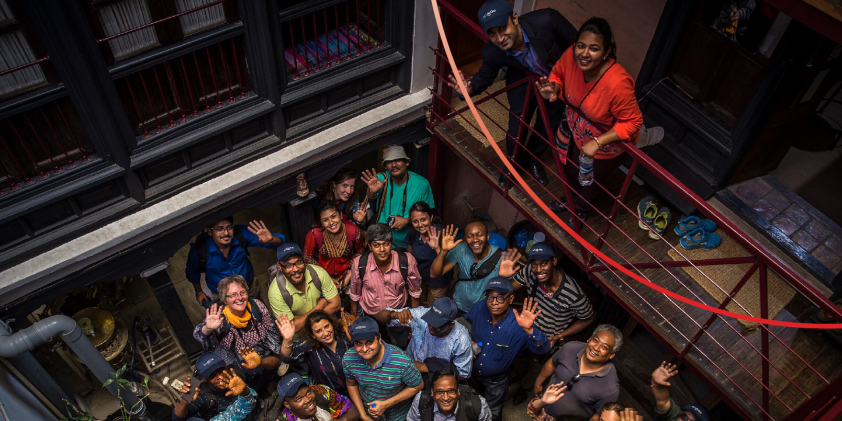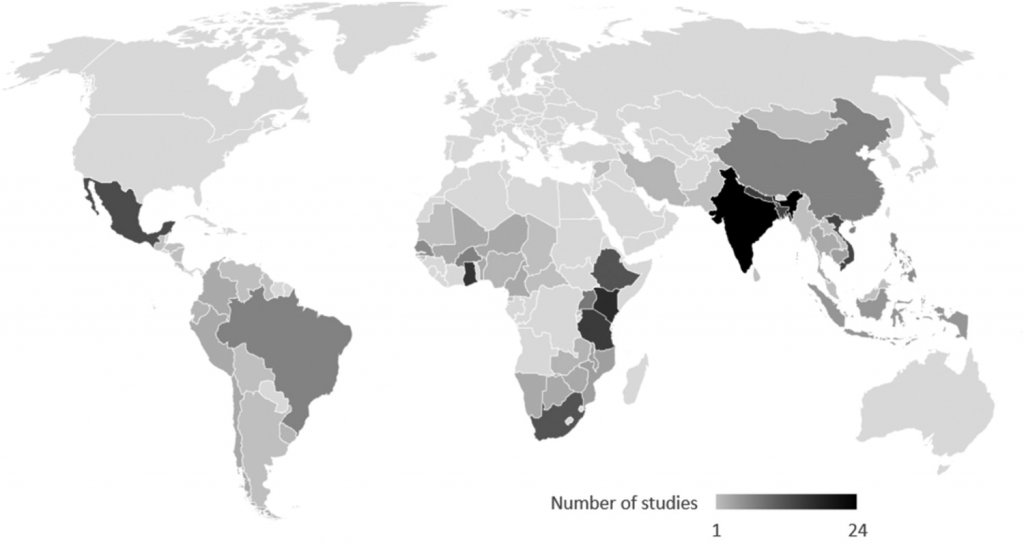
This article is part of the ISC’s Transform21 series, which features resources from our network of scientists and change-makers to help inform the urgent transformations needed to achieve climate and biodiversity goals.
How can we collaborate at scale to realize a more climate-resilient future? Over seven years, the Collaborative Adaptation Research Initiative in Africa and Asia organized four large-scale transdisciplinary consortia to build resilience at the frontlines of a changing climate. We focused on “hotspots”, climate-sensitive landscapes that extend across borders and are home to large numbers of vulnerable, poor, or marginalized people. Collectively we brought together more than 450 researchers across more than forty institutions, bridging global science and academic excellence with local practice and application on the ground. Our experience offer guidance on how to organize science to pursue transformations ahead of 2030, including designing for collaboration and working across borders.
Working together at scale, we advanced the field of climate adaptation including new evidence on people’s lived experience and the difference between + 1.5 °C and + 2 °C warming. These are the four key insights resulting from our collaboration:
People’s experience of climate change, and their ability to adapt to it, depends on age, gender, class, wealth and ethnicity. Where someone lives also shapes their exposure, while the decision to migrate can diversify risk and alter household dynamics. We identified how adaptation can address gender and social inequality, producing a synthesis of women’s agency and adaptive capacity in climate change hotspots in Asia and Africa.
Effective adaptation must focus on the vulnerabilities, abilities and aspirations of affected people, addressing the multiple intersecting barriers that are specific to each place. Through thousands of household surveys, we learned that while most migrants simply seek better opportunities, environmental degradation is also undermining livelihoods. Migration can enhance resilience, but it must be supported by planning and investment that benefits migrants and communities at their destination.
To contribute to the IPCC special report on Global Warming of 1.5C, we examined the regional consequences of +1.5 and +2C warming for agriculture, energy, and water. In semi-arid Botswana, an extra half-a-degree translates into 29 more days of heat stress and doubles the decrease in already scarce rainfall. In the high mountains of Asia, it means the loss of one-third or over half of the ice mass that supplies freshwater for millions of people downstream. In South Asia’s river deltas, the difference between +1.5 and +3C more than doubles the amount of flooding. Beyond government-led plans, a substantial amount of adaptation happens autonomously as individuals, households, companies, and private actors address the climate risks that affect them, their livelihoods, and their supply chains. Regulation and public investment can incentivize private sector adaptation, for example, by identifying and investing in climate risks along key value chains for livestock and for cotton.

If we want knowledge, data and expertise to come together to realize transformations, we need to intentionally design for that. For example, this means investing in a shared strategy & infrastructure for knowledge management, convening spaces for sharing such as learning review, and ensuring some flexibility in both budgets and people’s time. Beyond crafting a proposal or workplan, successful collaboration see participants come together to clarify ways of working. This included coordination both within geographic regions and scientific workstreams, to establish distinct responsibilities within teams and provide them some degree of autonomy. Inclusive partnerships clearly articulate an equitable distribution of resources, responsibilities & benefits; recognize different inputs, interests & desired outcomes; and ensure the ethical sharing & use of data which is responsive to the identified needs of society. Capacity is strengthened by designing research to enable experiential learning and exchanges, embed opportunities in larger efforts, and expand to new actors to co-produce actionable knowledge for impact. This broadens our understanding of capacity beyond the mere conduct of science to include skills for connecting science to its use in society.
Through the initiative, we produced 945 research outputs including 121 peer-reviewed journal articles and held 285 events reaching more than 9500 stakeholders, while 268 individuals benefited from capacity building such as graduate degrees, postdoctoral positions, and internships.

The national-level remains an essential entry point, including actors responsible for climate action through Nationally Determined Contributions and Long-term Strategies. We need to address the decisions these actors are grappling with, the challenges they face in implementation, and the forms of evidence and knowledge that are useful to them. Over five years, we contributed to over 20 local or national adaptation plans and strategies and to over a dozen policies in 11 countries. Outcomes included piloting adaptation technologies such as flood-resistant housing, informing the Bangladesh Delta Plan 2100, enhancing the capacity for vulnerability and risk assessment at the district level in Botswana, and identifying investments to improve climate resilience in livestock value chains.
Beyond the COVID-19 pandemic, travel over the next decade will be more limited as we now live in a carbon-constrained world. This will require greater reliance on in-country teams. At the same time, collaborative science can bridge local and national experience, and develop robust evidence across different countries and distinct locations. This is particularly vital for connecting to places where data and empirical research remain scarce, including parts of Western Asia and Central & Northern Africa.
We believe the future is collaborative. What we can achieve together is more than what any of us can do alone. These insights are already shaping future partnerships on climate adaptation & resilience, and are feeding into an Adaptation Research Alliance to be launched at COP26. Moving forward, we seek to achieve a step change in the ambition and scale of collaboration and climate action.
Bruce Currie-Alder is programme leader for climate adaptation in Africa and Asia within Canada’s International Development Research Centre (IDRC).
For more information about the ISC’s Members in Canada, see the Member Directory.
Header image: Programme participants (Jitendra Raj Bajracharya, 2017)